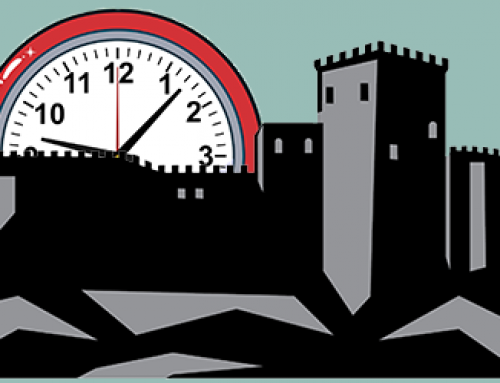What happens when everyday, every employee’s behavior, attitude, and practices bring you closer to your strategic objectives? Then you have a “Process Culture.” Here are the 5 ways you can develop your Process Culture.
What’s a Process Culture?
If you’ve ever had a Big Mac at McDonald’s, you’ve probably noticed it tastes the same whether you’re in Atlanta or Anchorage.
The layout of your local Walmart is probably the same whether you live in New York or New Mexico.
You could call that “standardization,” but it’s actually a laser-like focus on processes.
In fact, industry leaders use core processes as their strongest competitive differentiator.
Just like those industry leaders, if your organization supports the design and maintenance of efficient and effective business processes, then you have a “Process Culture.” A Process Culture is the day to day demonstration of employee behavior, attitude, and practices that drive you closer your strategic objectives.
Translating your strategic intent into day-to-day execution is the key objective of developing a process culture. When you have a process culture you’ll see consistent quality and predictable results throughout your organization.
Here are 5 ways you can develop a process culture:
Increase your sales effectiveness with PlanPlus Online.
A productivity system for leaders.

Have the end in mind
This goes back to the 7 Habits of Highly Effective People: “begin with the end in mind”.
The end objectives will define the actions needed to achieve them, and that will form the basis of day-to-day behavior.
Link process objectives to individual metrics
Have you ever heard the phrase “What gets rewarded gets repeated”?
Establishing a process culture requires creating productive habits, this means leveraging the right rewards, actions, and recognition mechanisms.
Create a process repository
 A repository is a central “place” to host and publish processes so they are living and breathing–easy to access, and easy to update.
A repository is a central “place” to host and publish processes so they are living and breathing–easy to access, and easy to update.
In addition, your entire organization needs to have a common understanding of the process language.
Have a common language and so that everyone understands the definition of the terms and words you use to build your processes.
Support innovation through process management
Innovation is usually referred to as ‘Out of Box’ thinking, but it’s important to define that box—in this case, the “process,” and then determine if small, incremental process improvements are sufficient to meet the business needs, or if a radical shift is required.
It’s equally important to have a process for innovation especially when innovation is the key to remain competitive.
Process management should provide a well-defined process for selecting ideas, funding them etc. to support ongoing innovation. You must be willing to try new ideas and approaches that have some risk of failure in order to make changes leading to perfection.
Just make sure that you learn from your mistakes that you will make on the way. No failure is a failure, if you learn something from it.
Continue to support your process culture
 As a leader, it’s important to understand that your culture is influenced by your leadership style.
As a leader, it’s important to understand that your culture is influenced by your leadership style.
It’s been proven that the personality, philosophy, and experience of leaders get embodied in its group’s culture.
You’ll facilitate the development of the process culture by aligning your culture with your organization’s common goals and strategies.






